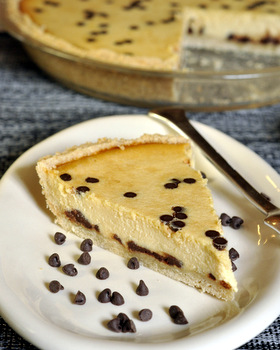
Pie crusts are intimidating to many bakers because we always hear how difficult and temperamental they are to make. Pie crusts are not that difficult to make, but there are quite a few problems that you can encounter with them and, unfortunately, sometimes you won’t know what is wrong with a pie until after you have baked it, so make sure to read through these tips before you start your next batch of holiday pie baking to avoid running into any problems!
The pie crust separated or shrank from the pie plate.
This happened because the pie dough was not rested before you baked it. A crust needs to be rolled out and fitted to your pie plate then rested again in the refrigerator for at least 15 minutes before baking. This allows the gluten in your flour to relax so the pie won’t shrink dramatically when baking. Using pie weights in a blind-baked crust will also help.
My butter is gets too soft to cut in to the flour when I make pie dough.
They say bakers need cold hands to work with pastry. If your hands run naturally hot, don’t even try to make the dough by hand. Use a food processor to make the crust and save yourself time and trouble.
My pie dough turned gray in the fridge.
Unbaked pie dough doesn’t have a long shelf life before it starts to oxidize and turn a funny color. You need to use it within a day or two of making it, and store it in an airtight container in the refrigerator. If you are making a big batch and want to keep them on hand longer, store your crusts in the freezer, where they will keep (provided they are well-wrapped) for months.
My crust is too soggy or pale after baking.
Your crust is underbaked. Chances are that it is too late to go back and fix it now. In the future, try prebaking your pie crust or rolling it out thinner before putting it into the pie pan. The type of pie pan can also make a difference. Glass or pyrex pans often produce the best browning – and you can see through them to check on the status of your crust!
My crust is tough, not flaky.
If your pie crust is tough, it means that it was overworked. It will start to shrink back dramatically when you try to roll it out. Your pieces of butter may have been so finely incorporated that they are not large enough to produce a flaky crust. Wrap up the dough and rest it in the refrigerator for at least an hour to relax the gluten and the dough will not be as tough when you try to work with it. Or start over with a new crust and handle it delicately.
Pie Crust Recipes:






What do you think?